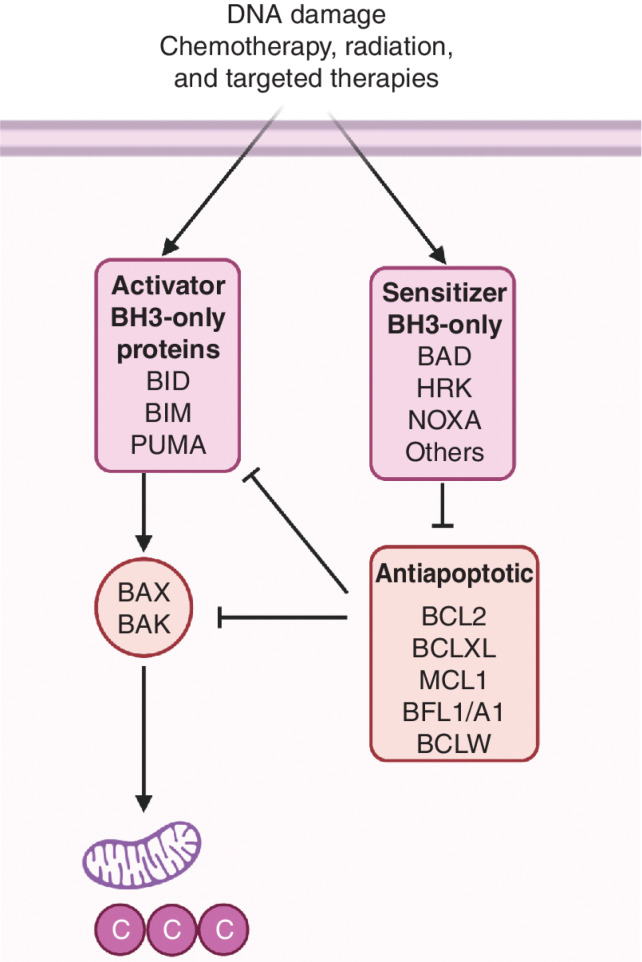Figure 1.
The BCL2 interactome. The BCL2 family of proteins is comprised of four distinct subgroups: effectors, activators, antiapoptotics, and sensitizers. Once activated, effectors BAX and BAK induce mitochondrial outer membrane permeabilization (MOMP), leading to apoptosis. In response to therapy or oncogene activation, BH3-only activators (BID, BIM, or PUMA) engage effectors, promoting cell death. Antiapoptotic proteins (BCL2, BCLXL, MCL1, BFL1/A1, and BCLW) sequester activators or effector proteins to prevent apoptosis. BH3-only sensitizers act as selective antagonists of antiapoptotic proteins. For example, BAD has high affinity for BCL2, BCLXL, and BCLW, but not for MCL1 or BFL1. In contrast, HRK selectively binds to BCLXL, and NOXA specifically binds to MCL1. When proapoptotic members outnumber antiapoptotic, the mitochondria are permeabilized by BAX/BAK releasing cytochrome c and SMAC/DIABLO to the cytosol and engaging apoptosis.

